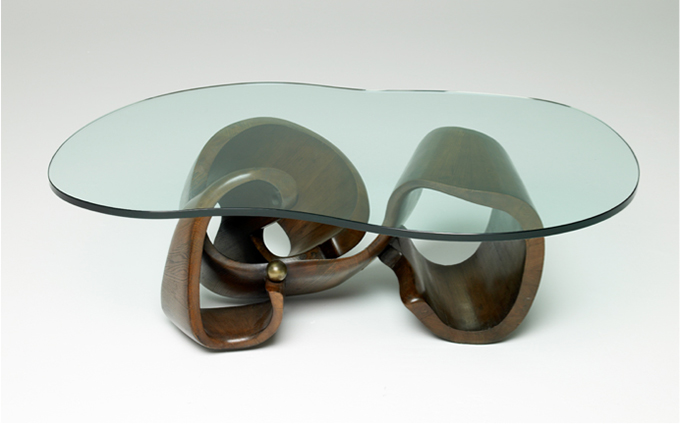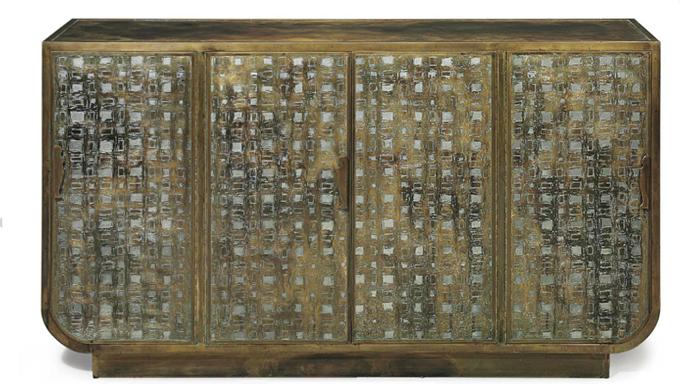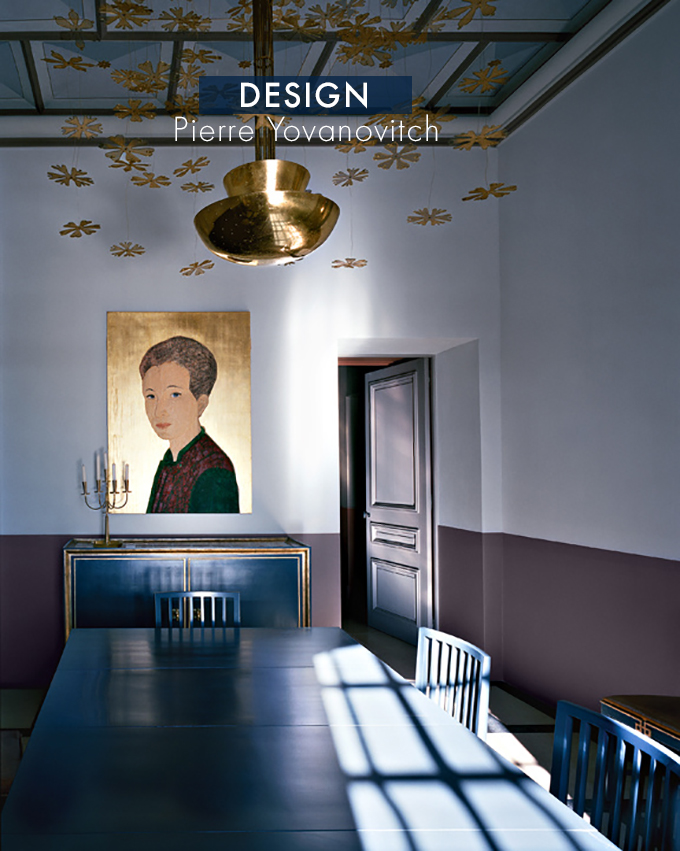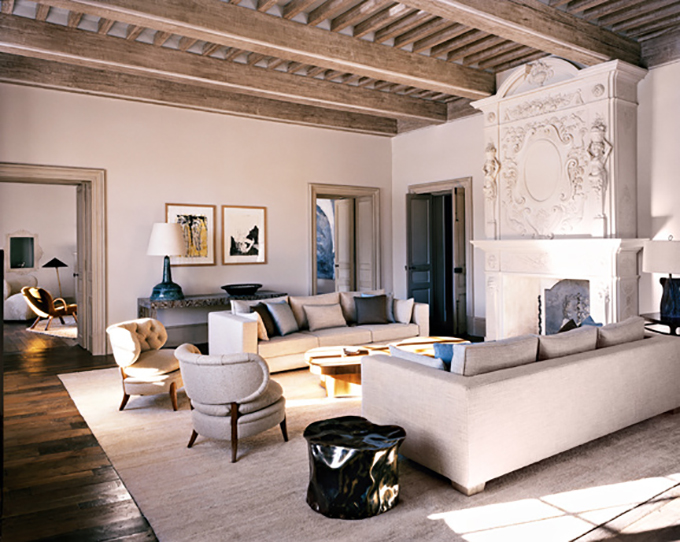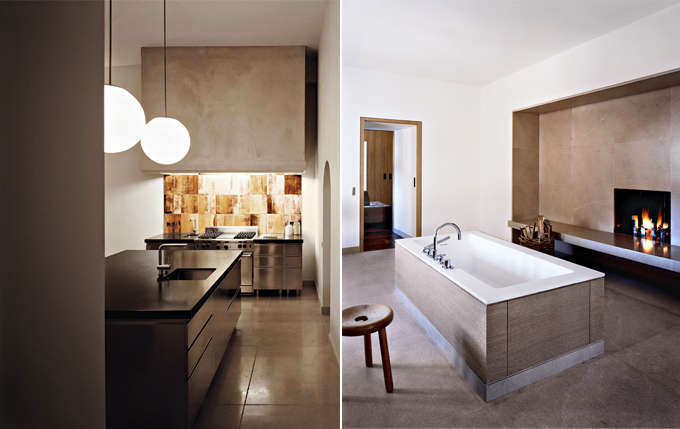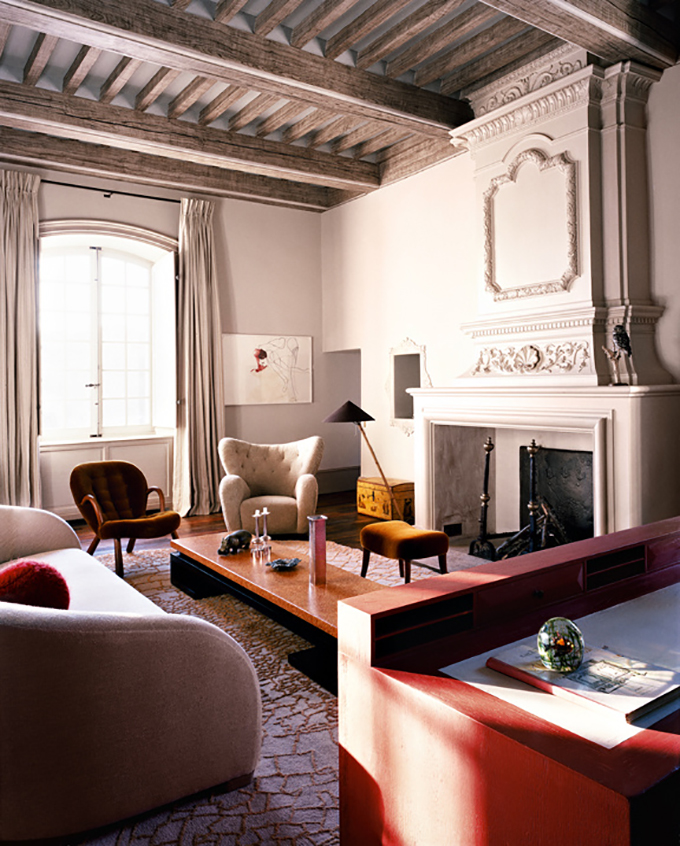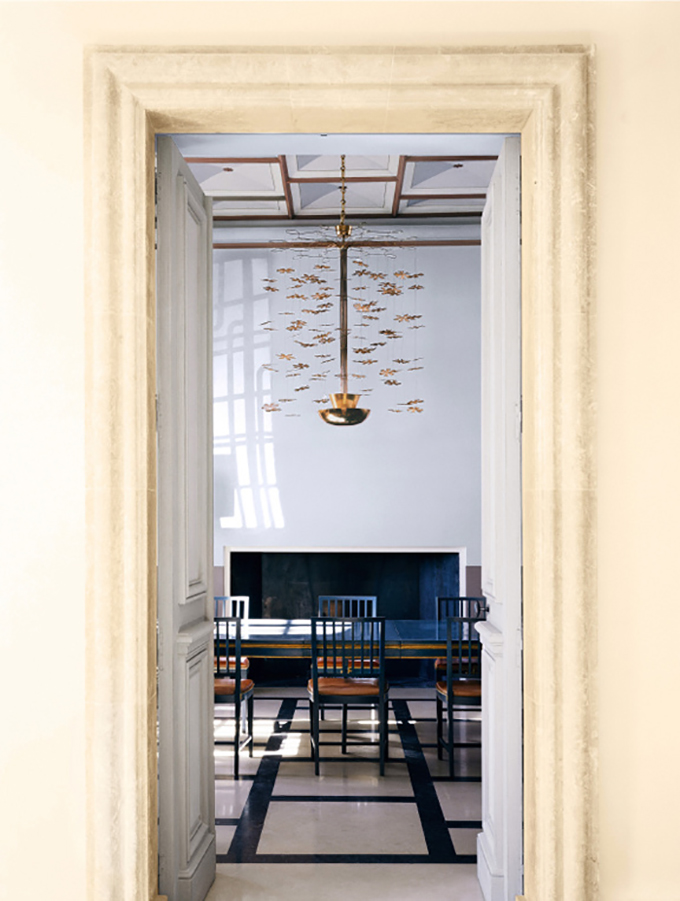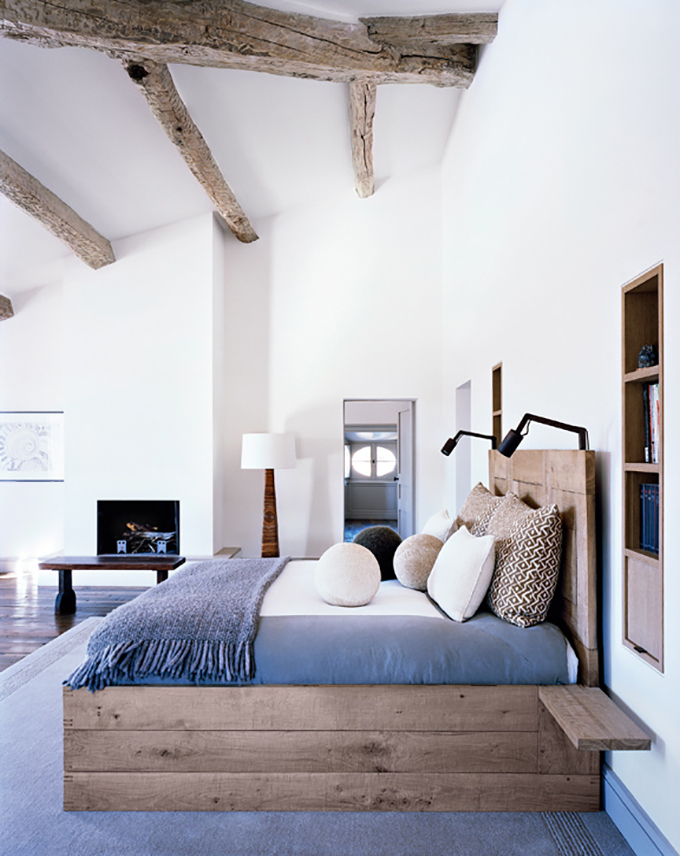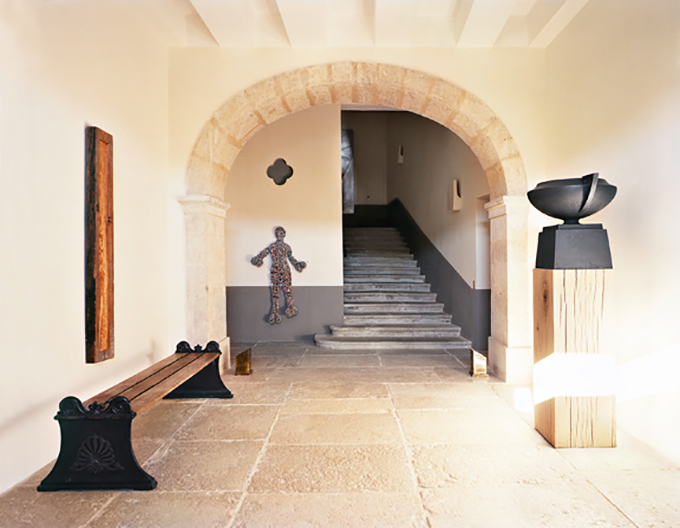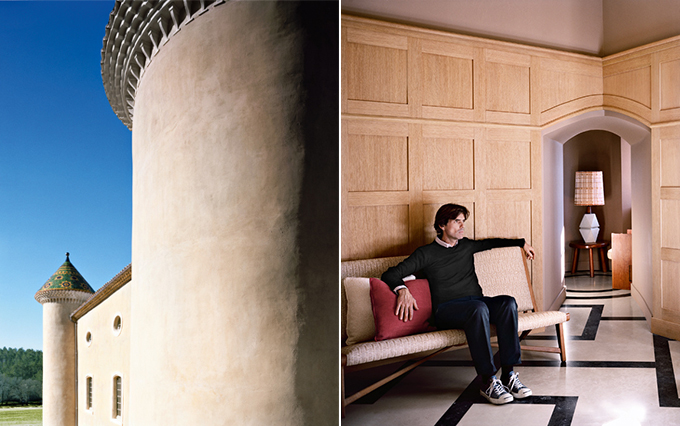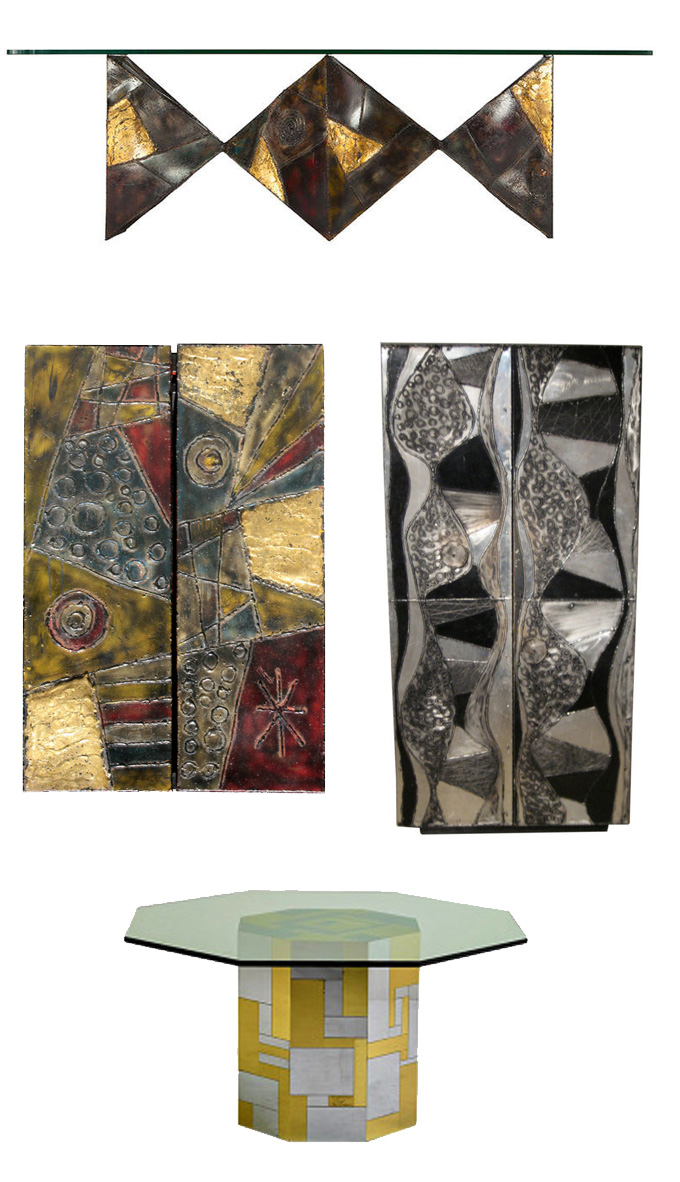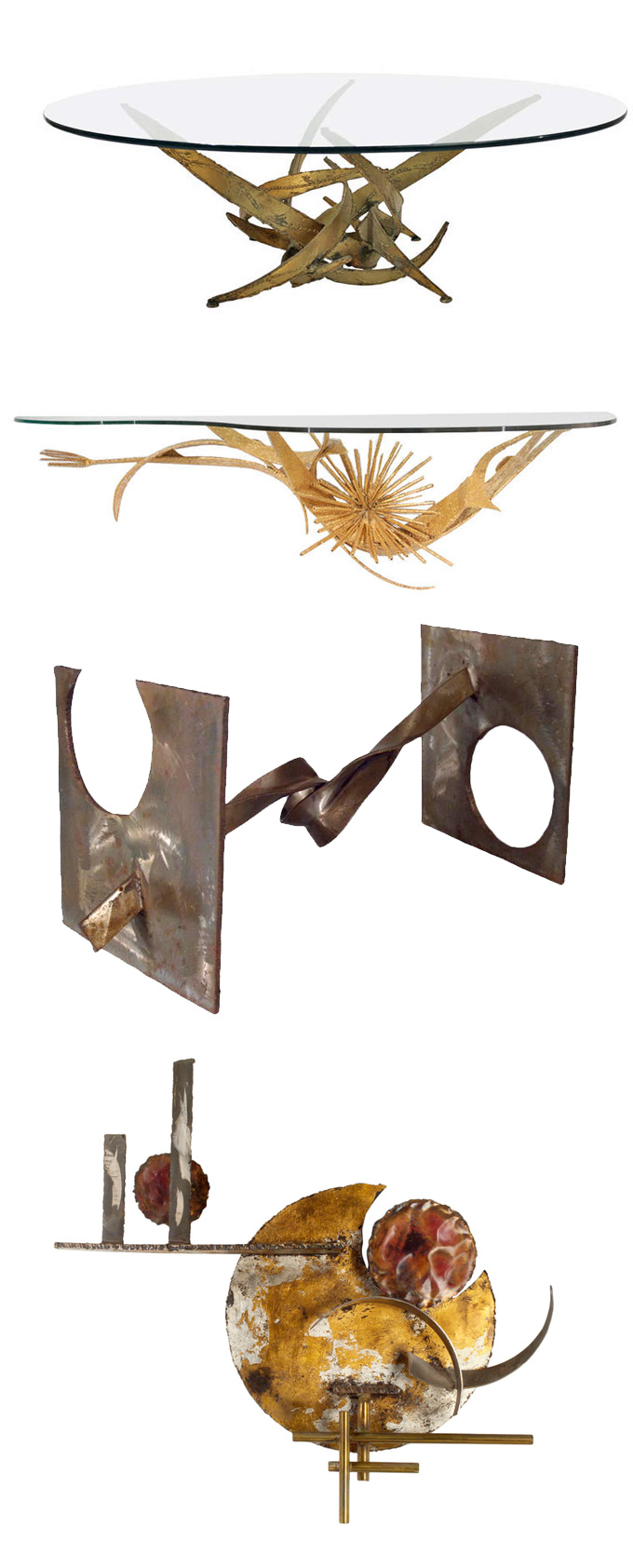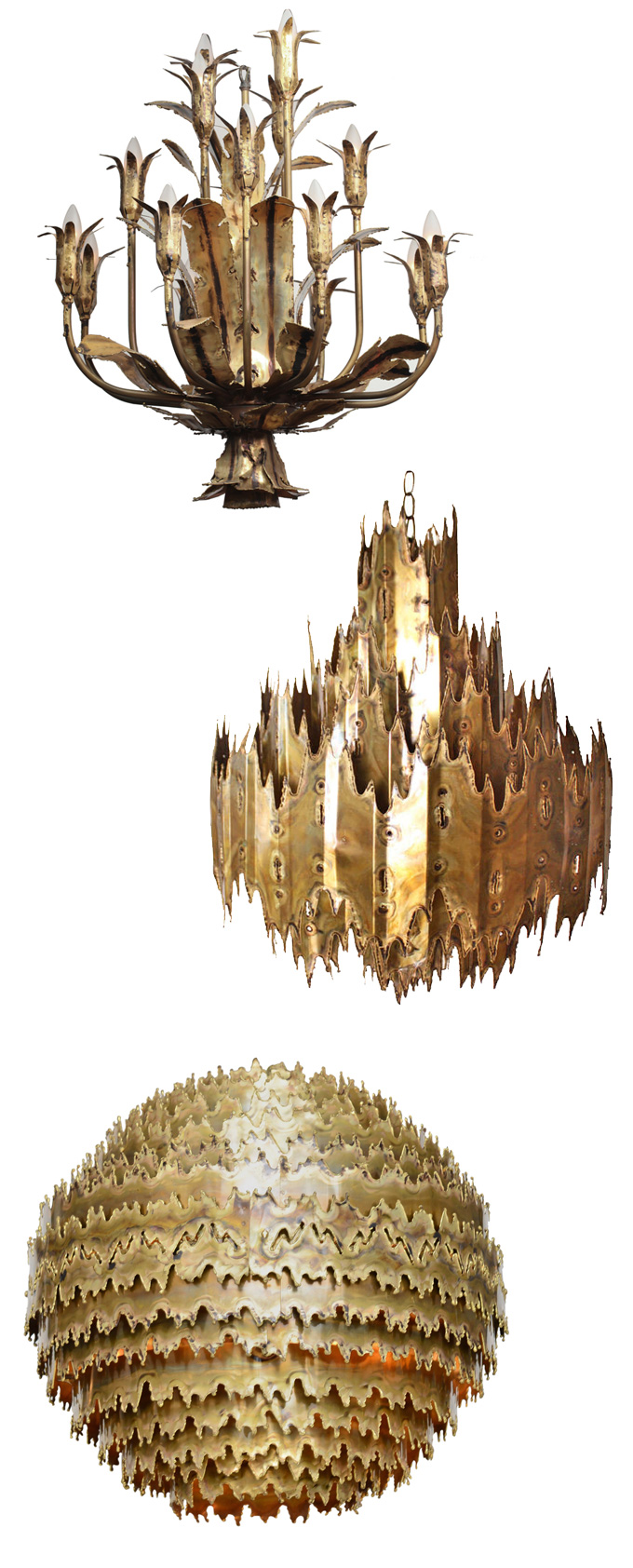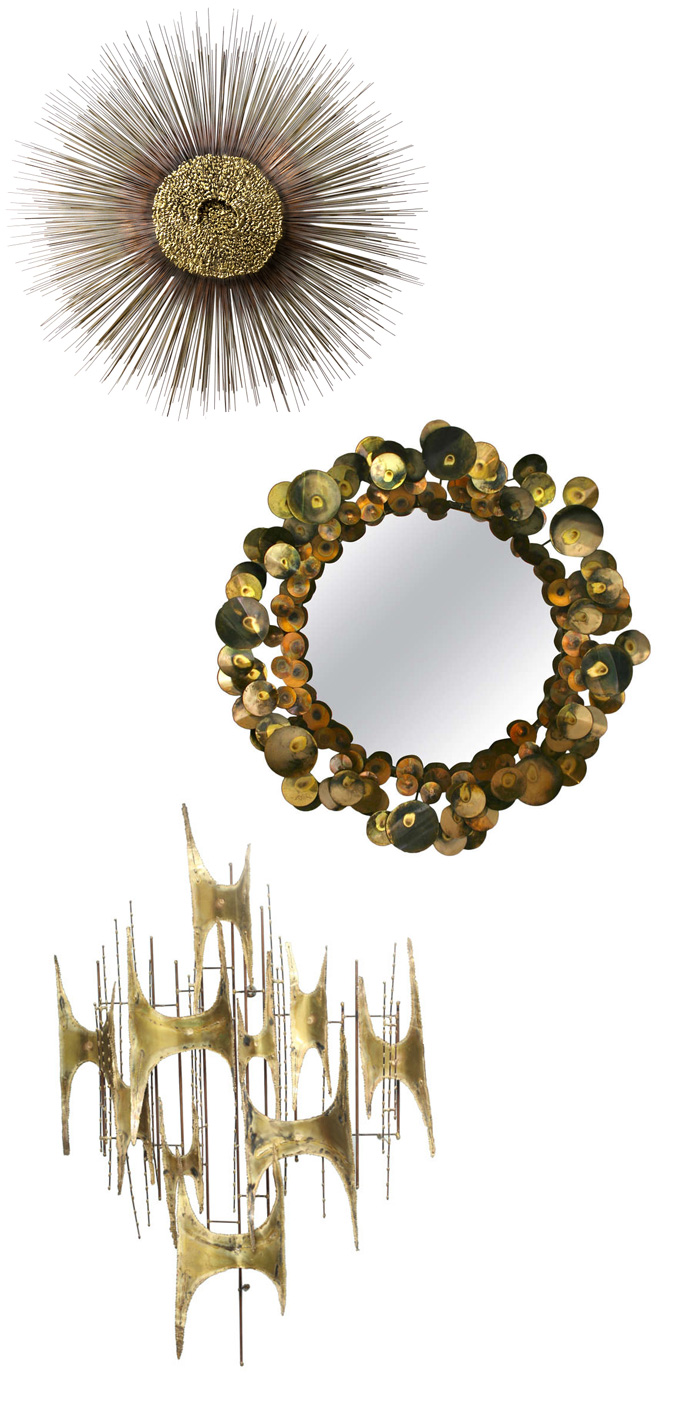Okay, I admit I love Antiques Roadshow. I especially love it when someone has brought in an item they paid a pittance for only to discover it is now worth a fortune. A lovely lady paid $600 for a beautiful bronze console table etched with exotic Asian designs. She soon discovered that she had purchased an exquisite table designed by Philip & Kelvin La Verne and that her table had an estimated value of $25,000 to $30,000.
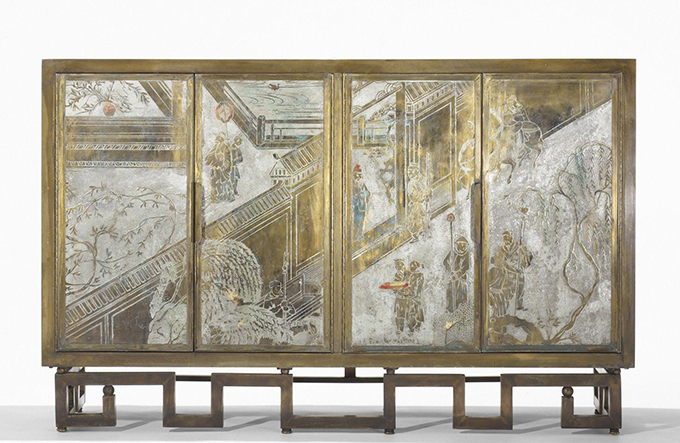 Philip and Kelvin LaVerne Chan cabinet circa 1965. Patinated and acid-etched brass over pewter and wood.
Philip and Kelvin LaVerne Chan cabinet circa 1965. Patinated and acid-etched brass over pewter and wood.
I have long admired the work of Phillip and Kelvin LaVerne, a father and son artistic team designing one of a kind works of art that also happen to be beautiful and now highly collectible furniture. The LaVernes worked mostly in bronze, using innovative methods, including burying bronze and pewter slabs in soil for up to six weeks to achieve the beautiful patinas and etches so highly prized in their work. The LaVernes were fond of ancient motifs, such as Egyptian and Asian references that give their work a timeless quality. Produced primarily in the 1950’s and 1960’s, their pieces now command stratospheric prices and are highly sought after by collectors. The Christina Grajales Gallery and Todd Merrill, both in New York, are leading dealers carrying the work of these exceptional artists.
Here are some exceptional examples of their work:
Philip and Kelvin LaVerne coffee table, Todd Merrill
‘Les Femmes’ A patinated bronze and pewter cabinet, circa 1970, Christies

